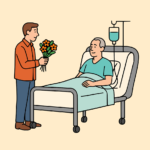Book Appointment Now

Practice-Level Theories in Nursing
Nursing theories play a crucial role in guiding nursing practice, education, and research. While grand and middle-range theories provide broad and mid-level frameworks, practice-level theories in nursing are specific, highly focused theories designed to address particular aspects of patient care. These theories are indispensable for guiding day-to-day nursing interventions and providing direct, practical solutions to patient care challenges.
This article explores what practice-level theories in nursing are, their characteristics, and how they are applied in clinical settings.
Looking for essay writing help with practice-level theories in nursing?
Help With Nursing Paper
What Are Practice-Level Theories in Nursing?
Practice-level theories in nursing are the most specific and concrete types of nursing theories. They are focused on narrow, specific phenomena related to patient care and nursing practice. Unlike grand theories, which are broad and abstract, or middle-range theories, which are moderately abstract, practice-level theories deal with the particular aspects of care delivery that nurses face in their daily work.
Characteristics of Practice-Level Theories
- Highly specific: These theories focus on particular situations, populations, or health conditions, addressing specific nursing interventions.
- Easily testable: Practice-level theories are designed to be empirically tested and validated in clinical settings.
- Immediate applicability: These theories can be directly applied in patient care without significant modification, making them highly useful in clinical practice.
- Concrete outcomes: Practice-level theories are outcome-oriented, aimed at achieving specific patient outcomes through targeted nursing interventions.
Importance of Practice-Level Theories in Nursing
Practice-level theories are essential because they provide direct, actionable guidance for nurses in clinical settings. They help bridge the gap between theoretical knowledge and real-world nursing practice by offering clear strategies for improving patient outcomes.
Benefits of Using Practice-Level Theories
- Enhanced patient care: These theories allow nurses to tailor care plans to specific patient needs, improving care effectiveness.
- Evidence-based practice: Because these theories are testable, they contribute to the ongoing development of evidence-based nursing practice.
- Improved decision-making: Nurses can use practice-level theories to make informed decisions about patient care, ensuring that interventions are grounded in both theory and practical experience.
- Focused interventions: Practice-level theories are designed to address specific nursing issues, allowing for targeted interventions that are efficient and effective.
Application of Practice-Level Theories in Nursing
The application of practice-level theories in nursing is straightforward, as these theories are designed for direct use in clinical settings. Below are some examples of how these theories are applied to improve patient care.
1. Wiedenbach’s Helping Art of Clinical Nursing
Wiedenbach’s theory focuses on the nurse’s role in helping patients through both the art of nursing and technical care. It highlights the importance of understanding patients’ needs and providing individualized care based on those needs.
Application:
A nurse working with a post-operative patient might apply Wiedenbach’s theory by using empathy and therapeutic communication to understand the patient’s fears and concerns. This personalized care ensures that the patient feels supported, and their emotional and physical needs are addressed.
2. Orlando’s Nursing Process Theory
Orlando’s theory emphasizes the dynamic nurse-patient relationship, with a focus on identifying and meeting patients’ immediate needs. It is an interaction-based theory that centers on the use of effective communication to resolve patient issues.
Application:
In an emergency department setting, a nurse might use Orlando’s theory by actively engaging with a patient experiencing pain to identify the source of discomfort and determine the best course of action to alleviate it. Immediate intervention is key to resolving the patient’s distress.
3. Lydia Hall’s Care, Core, and Cure Model
Lydia Hall’s theory divides nursing care into three components: care (physical care), core (emotional and psychological aspects of care), and cure (medical interventions). This theory is highly applicable in clinical practice, as it offers a holistic approach to patient care.
Application:
A nurse in a rehabilitation unit may apply Hall’s model by addressing not only the patient’s physical rehabilitation needs but also their emotional well-being, through counseling and emotional support, and their medical needs, such as medication management.
4. Roper-Logan-Tierney Model of Nursing
This model is based on the 12 activities of living, which include aspects like breathing, eating, sleeping, and maintaining a safe environment. The model helps nurses assess a patient’s ability to perform these activities and determine which areas require nursing intervention.
Application:
A nurse in a long-term care facility may use this model to assess an elderly patient’s ability to perform activities of daily living (ADLs) independently. Based on the assessment, the nurse would create a care plan that supports the patient in areas where they need assistance, such as mobility or personal hygiene.
5. Peplau’s Interpersonal Relations Theory
Although more commonly classified as a middle-range theory, Peplau’s theory is also applied in a practice-level context when focusing on nurse-patient relationships. It emphasizes the therapeutic interaction between nurses and patients, which fosters trust and contributes to healing.
Application:
In psychiatric nursing, a nurse might use Peplau’s theory to develop a strong therapeutic relationship with a patient diagnosed with anxiety. Through communication and trust-building, the nurse helps the patient manage their condition and improve their mental health.
Differences Between Practice-Level and Other Nursing Theories
Understanding the distinctions between practice-level, middle-range, and grand theories is crucial for knowing when to apply each in nursing practice.
1. Scope
- Practice-level theories focus on specific nursing interventions or situations, offering clear, practical guidelines for care.
- Middle-range theories cover broader aspects of nursing but remain applicable to specific clinical problems.
- Grand theories provide a wide-ranging, abstract framework for understanding nursing but are less immediately applicable to specific patient care situations.
2. Abstraction
- Practice-level theories are the least abstract, focusing on concrete actions and outcomes.
- Middle-range theories balance abstraction with applicability, dealing with more generalized concepts.
- Grand theories are highly abstract and deal with overarching ideas about the nature of nursing.
3. Practicality
- Practice-level theories are designed for immediate use in clinical settings, making them highly practical and actionable.
- Middle-range theories can also be applied in practice but require more interpretation than practice-level theories.
- Grand theories are rarely used directly in practice but help guide overall nursing philosophy and education.
Importance of Practice-Level Theories in Modern Nursing
In today’s complex healthcare environment, where nurses must deliver care that is both efficient and personalized, practice-level theories in nursing are invaluable. They provide concrete guidelines that can be easily adapted to various patient care scenarios, from emergency care to chronic disease management. By integrating practice-level theories into everyday nursing practice, nurses ensure that their interventions are both effective and aligned with current evidence-based practices.
Key Takeaways:
- Practice-level theories offer specific, actionable frameworks for patient care.
- These theories are easily testable, making them ideal for use in evidence-based practice.
- They directly improve patient outcomes by guiding focused interventions tailored to individual needs.
- Practice-level theories complement broader nursing theories, offering a practical application of theoretical knowledge.
Practice-level theories in nursing are indispensable for guiding everyday nursing interventions and improving patient outcomes. They offer a focused, specific approach that allows nurses to address particular aspects of care effectively. By incorporating these theories into clinical practice, nurses are better equipped to provide evidence-based, patient-centered care that meets the unique needs of each patient.
Whether addressing immediate needs through Orlando’s Nursing Process Theory or providing holistic care with Lydia Hall’s Care, Core, and Cure Model, practice-level theories play a vital role in modern nursing. These theories not only enhance patient care but also contribute to the ongoing development of the nursing profession by grounding practice in both theory and evidence.
Also read:
- Nursing Theorists and Their Work NSG 416
- Listing of Selected Established Theories and Theorists
- Difference Between These Theorists Ideas Regarding Inequality
- Evolution of Nursing Theories Discussion
- NR 501 Week 4 Threaded Discussion, Connection Between Theory and Advanced Clinical Practice







